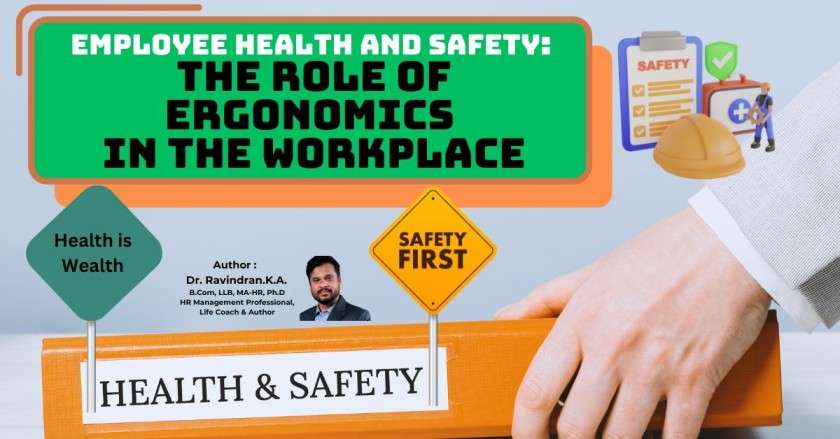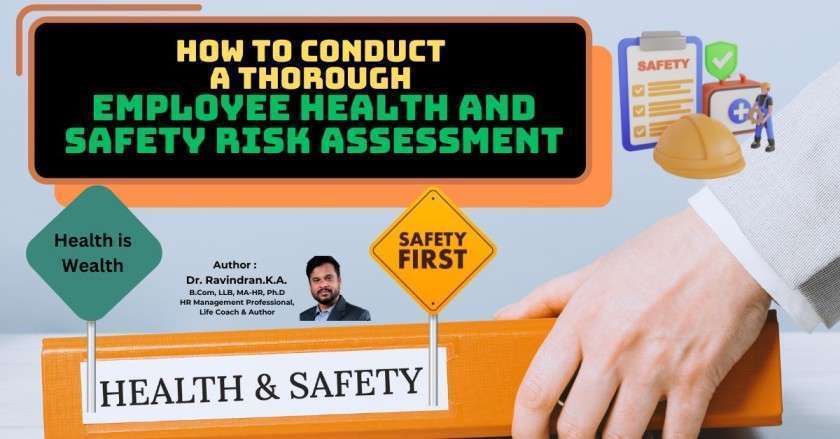Employee health and safety should be the top priority for every organization. Implement robust policies, training programs, and protective measures to ensure a safe work environment.
In today’s fast-paced business landscape, where productivity and success are the driving forces, have you ever wondered how your organization’s commitment to employee health and safety can impact its overall performance? It may come as a surprise, but prioritizing the well-being of your workforce is not only a moral obligation but also a strategic imperative that can unlock remarkable benefits for your company.
Thank you for reading this post, don't forget to subscribe!
This article will explore the fundamental importance of employee health and safety, outline practical strategies for implementation, and delve into the role of personal protective equipment (PPE) in creating a culture of safety that empowers your team and propels your business forward.
Key Takeaways
- Maintaining a safe and healthy work environment is a legal responsibility and a moral obligation for every organization.
- Employee well-being has a direct impact on morale, productivity, and the overall success of the business.
- Comprehensive risk assessments and targeted safety training programs are essential for implementing effective employee health and safety strategies.
- Fostering a culture of safety requires open communication, leading by example, and recognizing safe practices.
- Investing in high-quality personal protective equipment (PPE) and ensuring its proper usage can significantly reduce the risk of workplace injuries and illnesses.
Understanding the Importance of Employee Health and Safety
Employers have a legal obligation to ensure the health and safety of their employees. Neglecting this legal obligation can lead to costly fines, lawsuits, and reputational damage. Beyond legal compliance, prioritizing employee well-being has a direct impact on employee morale and productivity. Healthier and safer workplaces foster a positive work environment, which in turn boosts employee engagement, job satisfaction, and overall employee productivity. Additionally, investing in preventative measures can significantly reduce the financial burden of workplace accidents and injuries.
Legal Obligations and Responsibilities
In many countries, employers are legally mandated to provide a safe and healthy work environment for their employees. Failure to comply with these legal obligations can result in hefty fines, lawsuits, and even criminal charges. Staying up to date with occupational health and safety regulations and implementing robust safety protocols is crucial for employers to fulfill their legal responsibilities and protect their workforce.
Impact on Employee Morale and Productivity
When employees feel their well-being is prioritized, it has a profound impact on their morale and productivity. A safe and healthy workplace promotes a positive work culture, fostering a sense of trust, engagement, and job satisfaction among the workforce. Employees who feel valued and secure in their work environment are more likely to be motivated, collaborative, and committed to the organization’s success, ultimately contributing to enhanced employee productivity.
Avoiding Costly Accidents and Injuries
Workplace accidents and injuries not only take a toll on employees’ physical and emotional well-being but also result in significant financial burden for the organization. Lost productivity, medical expenses, legal fees, and potential regulatory fines can quickly add up, negatively impacting the company’s bottom line. By proactively implementing accident prevention measures and fostering a culture of safety, employers can significantly reduce the risk of such incidents and the associated costs, ultimately benefiting the overall employee health and safety.
Employee Health and Safety: Practical Strategies
Developing and implementing effective employee health and safety strategies requires a multifaceted approach. The first step is to conduct comprehensive risk assessments to identify potential hazards and vulnerabilities in the workplace. This information can then be used to develop targeted safety training programs that educate employees on best practices, proper procedures, and emergency protocols.
Conducting Comprehensive Risk Assessments
Thorough risk assessments are crucial in identifying potential threats to employee well-being. By carefully examining the work environment, equipment, and processes, organizations can pinpoint areas of concern and develop targeted solutions to mitigate risks. This proactive approach helps create a safer workplace and ensures compliance with relevant health and safety regulations.
Implementing Safety Training Programs
Regular safety training programs play a vital role in fostering a culture of safety awareness and responsibility within the organization. These programs equip employees with the necessary knowledge and skills to recognize and address potential hazards, follow proper protocols, and respond effectively in emergency situations. Investing in comprehensive safety training not only protects employees but also enhances overall productivity and business performance.
| Strategies for Effective Employee Health and Safety | Benefits |
|---|---|
| Conducting Comprehensive Risk Assessments |
|
| Implementing Safety Training Programs |
|
Creating a Culture of Safety
Cultivating a culture of safety within an organization goes beyond simply implementing policies and procedures. It involves fostering open communication, where employees feel empowered to report concerns, share ideas, and actively participate in safety initiatives. This culture of safety is essential for creating a workplace environment that prioritizes employee well-being and empowers everyone to contribute to maintaining a safe and healthy work environment.
Encouraging Open Communication
Open communication is the foundation of a successful safety culture. Employees should feel comfortable voicing their safety concerns, suggesting improvements, and collaborating with management to identify and address potential hazards. By encouraging this level of open communication, organizations can proactively address issues, gather valuable employee insights, and foster a shared sense of responsibility for maintaining a safe workplace.
Leading by Example
Leadership plays a crucial role in setting the tone and leading by example when it comes to safety. When management demonstrates a genuine commitment to employee well-being, it sends a powerful message that safety is a top priority. Executives and managers who actively participate in safety training, comply with safety protocols, and visibly prioritize safety in their daily activities can inspire and motivate employees to do the same.
Recognizing and Rewarding Safe Practices
Recognizing and rewarding employees for their safe practices is an effective way to reinforce the importance of safety and encourage everyone to prioritize it in their daily activities. Organizations can implement formal recognition and rewards programs that celebrate individuals or teams who go above and beyond in maintaining a safe work environment. By acknowledging and rewarding these positive behaviors, employers can foster a culture where safety is valued and embraced by all.
Investing in Personal Protective Equipment (PPE)
Personal Protective Equipment (PPE) is a critical component of any comprehensive employee health and safety program. Selecting the appropriate PPE for the specific work environment and tasks is essential to ensure maximum protection. Investing in high-quality personal protective equipment can significantly reduce the risk of workplace injuries and illnesses.

Selecting the Right PPE
When it comes to PPE selection, a one-size-fits-all approach simply won’t do. Employers must conduct thorough assessments of their work environments and identify the specific hazards their employees face. This information can then be used to choose the most suitable personal protective equipment that provides the necessary safeguards, such as hard hats, safety goggles, gloves, or respiratory protection.
Proper PPE Usage and Maintenance
Providing comprehensive training on the proper use and maintenance of PPE is equally important. Improper usage or neglected upkeep can compromise the effectiveness of the equipment and endanger employees. Employees must be educated on how to correctly don, doff, and care for their personal protective equipment to ensure it remains in optimal condition and continues to protect them from potential hazards.
By investing in high-quality personal protective equipment and ensuring its proper utilization and maintenance, organizations can create a safer work environment and significantly reduce the risk of workplace injuries and illnesses.
FAQ
What are the legal obligations and responsibilities of employers when it comes to employee health and safety?
Employers have a legal responsibility to ensure the health and safety of their employees. Neglecting this duty can lead to costly fines, lawsuits, and reputational damage.
How does prioritizing employee health and safety impact morale and productivity?
Healthier and safer workplaces foster a positive work environment, which in turn boosts employee engagement, job satisfaction, and overall productivity. Investing in preventative measures can also significantly reduce the financial burden of workplace accidents and injuries.
What are the key steps in developing and implementing effective employee health and safety strategies?
The first step is to conduct comprehensive risk assessments to identify potential hazards and vulnerabilities in the workplace. This information can then be used to develop targeted safety training programs that educate employees on best practices, proper procedures, and emergency protocols.
How can organizations create a culture of safety within the workplace?
Cultivating a culture of safety involves fostering open communication, where employees feel empowered to report concerns and share ideas. Leadership also plays a crucial role in setting the tone and leading by example, demonstrating a genuine commitment to employee well-being. Recognizing and rewarding safe practices reinforces the importance of safety and encourages employees to prioritize it in their daily activities.
What factors should be considered when selecting and using personal protective equipment (PPE)?
Selecting the appropriate PPE for the specific work environment and tasks is essential to ensure maximum protection. Providing comprehensive training on the proper use and maintenance of PPE is equally important, as improper usage or neglected upkeep can compromise the effectiveness of the equipment and endanger employees.
Thank You for Reading!
Thank you for taking the time to read our blog on Employee Health and Safety. We hope you found the information valuable and insightful. Your commitment to creating a safer and healthier workplace is commendable, and every step you take towards improving health and safety standards makes a significant difference.
If you enjoyed this post and found it helpful, please share it with your colleagues and network to spread awareness about the importance of employee health and safety. Don’t forget to subscribe to our newsletter for more tips, insights, and updates on the latest trends in workplace safety. Let’s work together to create a safer, healthier work environment for everyone!
If you have any questions, need further information, or would like to discuss how to enhance health and safety in your workplace, please feel free to us. We’re here to help and support you in any way we can.
Stay informed, stay healthy & safe!
 hroptimum
hroptimum



